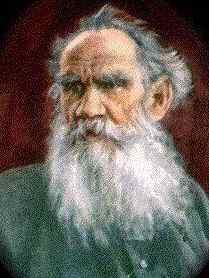
[From article]
Walter Scott, a 50-year-old resident of North Charleston, South Carolina, was stopped by a local police officer for driving with a broken taillight. Scott bolted from his Mercedes Benz and ran off—actions captured by the police cruiser’s dashboard camera. When a cell-phone video shot by a bystander starts up several moments later, police officer Michael Slager has caught up to Scott in a grassy field and has already used his Taser against him. Scott and Slager scuffle, before Scott runs away again. Slager unholsters his gun and fires eight rounds at Scott’s back, initially from a distance of half a dozen yards. Scott falls. He dies at the scene.
Since 2013, Scott had been wanted on an arrest warrant for $18,104 in unpaid child support.
[. . .]
Immediately after the bystander video was released, the North Charleston Police Department fired Slager and the local district attorney charged him with murder.
[anti police protesters] main lines of argument are the following: First, innocent minority men are routinely mowed down by the police; second, the police routinely lie about their encounters with minority men; and third, assertive policing in minority neighborhoods is the ultimate culprit behind the alleged epidemic of police homicides. None of these claims is borne out by the evidence.
We don’t know how many people police kill each year.
[. . .]
It’s not even known how many agencies report their police homicides to the FBI; one calculation puts that number at around 750, out of approximately 18,000 police departments.
[. . .]

The Bureau of Justice Statistics, using complex statistical sampling rather than actual reports of homicide, has estimated about 1,000 police killings a year from 2003 to 2009—a number that seems high in light of verified reports from actual agencies such as the New York Police Department.
Saying anything definitive about police shootings is therefore difficult. Historically, somewhat less than half of the 400 police homicides reported to the FBI each year have black subjects. This is consistent with the black crime rate. Blacks make up over half of all homicide perpetrators in the country; in 2013, they were 42 percent of all cop-killers, despite being merely 12 percent of the population. From 1980 to 1998, young black males murdered police officers at almost six times the rate of young white males.
[. . .]
Data from New York City, where the police maintain highly detailed records on officer use of force, match Kleck’s findings. In 2011, New York officers fired at 41 suspects and killed nine of them—an astonishingly low number in light of New York’s population (over 8 million) and the size of its police force (35,000 uniformed officers). Blacks were 22 percent of those fatalities; whites were 44 percent of police fatalities. Yet blacks were 67 percent of all suspects who fired at the police; no white suspect fired at the police. Moreover, blacks made up 73 percent of all shooting perpetrators in the city in 2011, according to the victims of, and witnesses to, those shootings, though blacks are only 23 percent of the population. Whites committed less than 3 percent of all shootings, though they are close to 35 percent of the city’s population.
[. . .]
The Michael Brown saga was a particularly public display of the routine civilian lying about police stops in the inner city. Actress Taraji Hensonrecently apologized to the Glendale, California, police for falsely claiming that the department racially profiled and mistreated her son during a traffic stop. Evidence discredited New York Times columnist Charles Blow’s claim that his son was abused by Yale University police.
[. . .]
There has been no more successful government program for saving black lives than assertive policing. In New York City, over 10,000 minority males are alive today who would have been dead had homicide levels stayed at their early 1990s level. And it was proactive policing that lowered the New York homicide rate.
[. . .]
every year more than 6,000 blacks are homicide victims, more than the number of white and Hispanic homicide victims combined, even though blacks make up only 13 percent of the national population. They are killed not by cops, but by other blacks. For that reason, the press ignores these killings.
On March 11 of this year, as protestors again converged upon the Ferguson, Missouri, police headquarters demanding the resignation of the entire department, a six-year-old boy name Marcus Johnson was killed a few miles away in a St. Louis park, the victim of a stray bullet fired in a dispute. There were no mass protests over his killing; Al Sharpton did not call for a Justice Department investigation.
http://www.city-journal.org/2015/eon0414hm.html
HEATHER MAC DONALD
Tragedy, Not Pattern
Unjustified police shootings, like that of Walter Scott, remain rare.
April 14, 2015






No comments:
Post a Comment